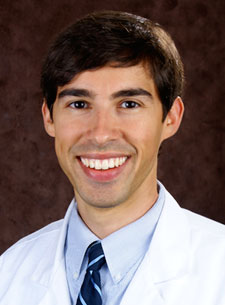USF study reviews insurance coverage of ER department eye care in Florida
Healthcare reform’s effect on emergency department services could be substantial, researchers say
Tampa, FL (Jan. 10, 2012) — The jury is still out on how the Patient Protection and Affordable Care Act will affect safety-net institutions such as emergency departments, but a new University of South Florida study suggests that growth in Medicaid populations expected under the new health care reform act may aggravate current challenges of providing emergency eye care in Florida.
A substantial proportion of emergency department eye care in Florida is reimbursed through Medicaid or paid out of pocket by patients, and those findings may help in strategic planning as the debate over how best to implement the nation’s new health care reform law progresses, according to the USF researchers. Their study was published in the January 2012 issue of Archives of Ophthalmology, one of the JAMA/Archives journals.
Hospitals are preparing to launch key provisions of the health care form law in 2014. The law will increase insurance coverage in large part by expanding eligibilityfor Medicaid, “an already stressed and underfunded system in many states,” the authors wrote.

Lead author Dr. Matt Witmer
“Our study showed how the economic recession affected the principal payers of emergency department eye care in Florida – specifically the proportion of patients with Medicaid increased across the five years we studied,” said lead author Dr. Matthew Witmer, a former USF ophthalmology resident now conducting a vitreo-retinal fellowship at Weill Cornell College of Medicine in New York City. “We know that the volume of patients with health insurance will increase (under health care reform), but we don’t know how the new law will affect access to quality health care for all people.”
Dr. Witmer said he was struck by the volume of uninsured and underinsured patients visiting the emergency room when he was a resident providing on-call eye care at hospital emergency rooms in Tampa, FL. He collaborated with Dr. Curtis Margo, USF clinical professor of ophthalmology, in 2009 on a study investigating the ophthalmology workforce and emergency department eye care coverage in Florida. For this latest study analyzing health insurance coverage for emergency department eye care over a five-year period marked by economic recession, the two teamed with epidemiologist Zuber Mulla of the USF College of Public Health.
The USF researchers reviewed Florida Agency for Health Care Administration emergency department from 2005 through 2009. Of the 587,227 total emergency department visits identified with a primary diagnosis in need of eye care, 12,105 resulted in hospital admissions.
During the five-year study period, commercial insurance was the most frequent payer of emergency department outpatient services (31.1.percent), followed by self-pay (26.2 percent) and Medicaid (22 percent). The results indicated that for children and adolescents (those under 18), Medicaid and self-payment accounted for 67.7 percent of principal payers.
For outpatient emergency department visits, the percentage of change in Medicaid increased nearly 6 percent each calendar year and commercial coverage declined 4.5 percent.
If increased health insurance coverage under health reform results in more people seeing community physicians who could treat ailments before they become emergencies, then already out-of-control financial demands on hospital emergency rooms may decline. But, if that does not happen, emergency departments may assume an even larger safety-net function and greater financial risk as more patients move to Medicaid or other public insurers.
An Archives of Ophthalmology editorial commenting on the USF study notes emergency departments already face difficulty obtaining coverage for eye conditions, and suggests this pressure could escalate. “To the extent that reimbursement is linked to an increasing proportion of Medicaid patients, traditionally among the lowest of all payers for adult care,” wrote the Duke Eye Center editorial authors, “the economic incentive for ophthalmologists not employed by hospitals to provide coverage will decrease, further exacerbating challenges in obtaining call coverage of eye conditions.”
“Access to care could certainly become more of an issue if funding for reimbursement is not reasonable for specialties like ophthalmology,” Dr. Margo said.
While their study cannot be “indiscriminately generalized” to other states, the researchers say they believe the data are applicable to other states. Although the USF researchers examined only ophthalmology care, Dr. Witmer says the findings have implications for the future of other specialty medical services as well.
“Already stressed emergency departments and hospital staff need to be prepared to navigate change brought on by health care reform and the delayed economic recovery without compromising quality of care. Data within this study – although sobering – should be used for strategic planning as the debate on how to best implement the Patient Protection and Affordable Care Act moves forward,” the authors conclude.
– Story by Anne DeLotto Baier, USF Health Communications

